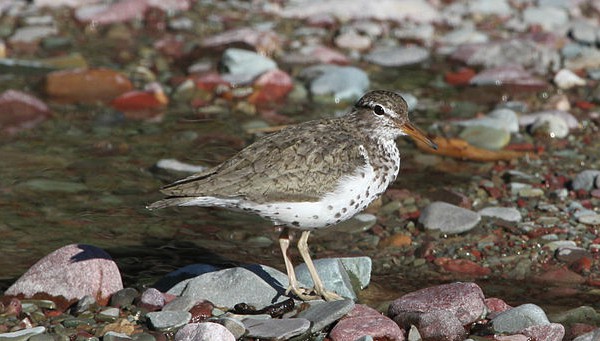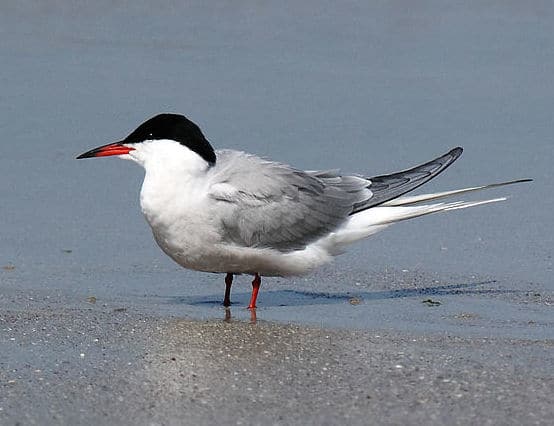Look for
The rough-legged hawk is a large, broad-winged raptor in the buteo genus named for the distinct feathers that cover its legs. It occurs in two color forms or “morphs”: dark and light. Both morphs have a white tail with a black terminal band. While in flight, viewed from below, both morphs have dark wing edging.
The light morph has distinctive dark wing patches at the wrists, and a dark belly. The dark morph has an entirely dark belly. It has yellow feet and a small, hooked beak. Light morphs a lighter head and breast, and brown streaky upperparts. Dark morphs are solid dark above and below.
Listen for
The rough-legged hawk’s call is a single-note, whistling cry that gradually descends in pitch and sometimes resemble a cat’s mewing keeeoowwrr.
Find it
The rough-legged hawk breeds in the northernmost Arctic tundra of North America, from northern Alaska east to Newfoundland and Labrador. It lives in open areas including ocean coasts, cliffs, fields, marshes, and at the edges of boreal forests. In the winter it migrates south as far as northern Texas, where it can be found in open habitats as well, including fields, bogs, prairies, farmlands, and grasslands.
Diet
During its breeding season, the rough-legged hawk feeds primarily on voles and lemmings as well as the occasional squirrel, hare, mouse, gopher, or bird. During the winter it feeds on a similar diet with the addition of any opportune carrion, frogs, and insects. It hunts on the wing and can often be seen hovering and swooping to catch prey. It also searches for prey by waiting on a high perch such as a tree or utility pole before taking off to chase its prey.
Nesting Behavior
The rough-legged hawk builds it nest on a narrow cliff ledge or rock outcropping. It sometimes builds its nest on the ground, on top of large rocks, in the top of a tree, or in a man-made object. The female builds the nest by constructing a dense, bulky pile of sticks and bones lined with finer plant materials such as grass and twigs.
She lays one to seven eggs that are a light greenish-blue with brown spotting. The male brings the female food as she incubates the eggs for 31 days before hatching. Both parents take turn hunting for food for the young before they are able to fly at five to six weeks.




